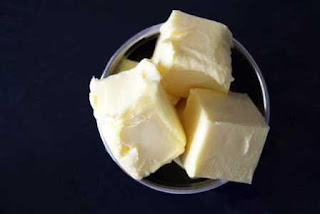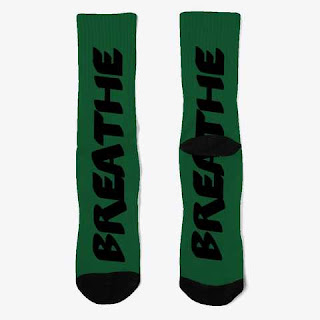 |
| How much fat can you really have? |
When you first start out on the keto diet, you will find yourself asking a lot of questions. Last week I addressed one of the most common questions asked among first time keto-ers… “How many carbs can I have on keto?” This week we are going to address the next most common question that I’m asked.
What fat can you eat on the keto diet?
This is a really great question. No matter what diet you decide to follow, it is universally important to fully understand what your body's unique nutritional needs will be.Before we begin to dive into the meat of the question, let me explain a few things and make sure that we are all on the same page.
Why is fat so important on the keto diet?
I’m sure that by now, most of you loyal readers have a good understanding of the keto diet. Maybe you’ve read some of my previous articles here on SA Spotters or visited my home page JPFitness.com and checked out some of my articles there. Maybe you have gone out and bought a copy of one of my best-selling books on the subject.That means that you’ve read the basics about how the keto diet works. If this is your first time reading about it, however, let me brush over the basics.
The Ketogenic Diet is a low-carbohydrate diet that is exceptionally well suited for burning excess body fat and increasing energy levels. It helps to prevent a number of health risks. The diet gets its name from the metabolic state your body enters into when it no longer has enough carbohydrates present to sustain energy.
This Ketogenic State, as it is known, is a natural response when your body runs out of glycogen (sugar - your body’s natural fuel source). In this ketogenic state, your body begins to burn fat for energy instead of burning carbohydrates like it normally would.
It is this natural action that makes the keto-diet so effective for weight loss. This is also the reason that fat is so important for you on the keto diet.
Keto requires a high fat diet to maintain energy. Fats replace carbohydrates as your diet's main source of energy. A general rule of thumb when you first start out on the keto diet is that 70% of your daily calories should be from fats. This leaves roughly 25% for protein and only 5% for carbohydrates.
The different types of fats
- Trans fat
- Saturated fat
- Monounsaturated fat
- Polyunsaturated fat
It is also where you probably first noticed that there are multiple types of fats out there. Not all fats are good but, equally, not all fats are bad. It is important to get a general idea of what each of the fats are and how they work with your body.
This will allow you to better understand not only what fats to avoid, but also why you want to avoid them. I’ve listed a few of the more popular fat sources that you are sure to encounter, with information about each of them.
Trans Fat
Trans fatty acids (or Trans fat for short) are the worst fat on the list. It is exactly what you think of when you think of fats. It comes from a food process where hydrogen is used to make vegetable oil into a solid form.They are commonly listed as partially hydrogenated oil on some labels - so don’t let the labels fool you. This type of fat is commonly found in unhealthy foods like cakes, doughnuts, fried foods, etc. This is the fats that you most definitely want to avoid as much as possible.
Saturated Fat
This is a keto dieter’s bread and butter. Well… maybe not bread but definitely butter! You will find your saturated fats in foods like beef, pork, fish, dark chicken, cream, butter, cheese, coconut oil, cocoa butter, and lard. This is the fat you will typically be looking for on a keto diet. Saturated fats have traditionally been linked to higher cholesterol and high blood pressure.Monounsaturated Fat
This is straight up keto super food! It is contained in things like avocado, olives, olive oil, most tree nuts, and tree nut butter. These foods should be at the very tip top of your grocery list! They are shown to reduce inflammation and aid in lowering cholesterol levels. Monounsaturated fats should be the lion's share of your keto diet.Polyunsaturated Fat
Just like monounsaturated fats, these fats are an amazing healthy class of fat that will keep you living your best life and aid you in things like lowering cholesterol, lowering blood pressure, and heart disease.Omega 3’s is a popular type of polyunsaturated fats that have been linked to some pretty incredible health benefits. You can find these fats in things like walnuts, seeds, and tofu. Salmon, flax seeds and chia seeds are also a great source of Omega 3 fatty acids.
This is by no means an all-encompassing list of fat sources. It is, however, meant to be more of a general guideline to cover most of the things that you will encounter. If you run across something in the grocery store and don’t know what it is, it is better the just avoid it.
Eating the wrong fats can be completely counterproductive to not just your weight loss goals, but your overall health. Don’t be afraid to pull out your phone out right there in the store and google whatever you run across.
It also may not be a bad idea to start using an app to help you keep track of your nutrient intake. For more about different keto apps available to you, check out my new article Top 5 Keto Apps of 2020.
How much fat is too much fat?
Now that we’ve talked a little bit about why fats are important, and what fats you should be looking for, let's talk about the real reason you are reading this article.How much fat is too much? The answer to the question of how much fat is too much is that it all depends on you.
There are just too many variables that go into this to give it a good blanket answer. Things like your body's metabolic rate and activity level are crucial in how much fat you can and/or should be consuming.
Generally, as with most diets, it is important to stay in a caloric deficit to achieve weight loss. The same is true of the keto diet. As I mentioned before, fats typically account for 70% of your daily calories because your body will be burning them for fuel rather than carbohydrates.
However, if you’re giving your body more fuel each day than it can burn; your body will naturally store that fuel for use at a later stage. This storage system is… you guessed it: Body fat.
So even if your body is fully fat adapted, you will gain weight rather than loose it if you overeat. For this reason, it is so important to pay attention to portion control. Use a macro calculator online, or one of the many phone apps available now a days, to find your body’s actual caloric needs.
The caloric number that I need to lose weight might cause someone else to gain weight, or vice versa.
From there, figure out a good healthy caloric intake which allows you to either stay in a slight caloric deficit or meet your caloric needs in order to maintain your current body weight.
No two people will have the same identical nutrient needs. The biggest thing to remember is to give your body time. Start off at a generic number and fat percentage. Work to zero in on what works best for you from there. Take the time to learn your body and listen to its needs. This is the number one biggest advantage that you can learn - no matter what diet plan you choose to follow. Listen to what your body tells you.
Conclusion
Unfortunately, there are no cookie cutter answers to a question like how much fat you should eat on keto. If I gave you a solid figure, I'd be disingenuous to both me and to you.Not all fats are created equal, just like not all people are created equal when it comes to how efficiently our bodies break down the fats. If you are confused and just do not know what to do, start with some generic numbers from a macro calculator.
Use an app to help keep you accountable. Get into the habit of meal prepping and ensure good healthy portion control. Also be aware of the types of fats that you are putting into your body. Stay away from Trans fats. Seek out better options like monounsaturated fats.
Give your body every advantage that you possibly can. Take the time to learn your body and how it communicates with you. Your body will tell you exactly what it needs if you take the time to listen.
As always, if you enjoyed this article please leave me a comment below and let me know what you thought! I love hearing from you and connecting with you. You guys are the reason that I’m here.
 |
| Buy the book for everything that you need to know. |
If you’re interested in learning more about keto as an athlete, pick up my brand new book Keto Strong – A Beginners Guide to High Performance Keto and let me help you get a jump start on your keto journey!
About J.P. Wells
J.P. Wells has spent the last 13 years of his life learning about and pursuing a healthy and active lifestyle. After sustaining a life changing injury during his time serving in the United States Military, he dedicated his time to learning and researching ways to heal and re-build his body to get back to the active lifestyle he grew up loving. |
| JP Wells |
On his blog J.P. Wells Fitness, J.P. Wells shares his knowledge and passions he has come to learn from the fitness industry and fitness culture. He understands that health and fitness is not just a one-time choice, but a lifestyle. Success in your goals is not made up of large single decisions, but rather a series of small choices made well throughout every day.
Check him out on Facebook or Twitter.
 |
| Support our website and buy these awesome Socks. |
No comments:
Post a Comment